If you ignore your lawn, over time, it will lose its green and start looking like a barren field often shown in horror movies and doomsday documentaries. Keep reading to find out how to make your lawn healthy, and let’s answer the question, can you put too much lime on your lawn?
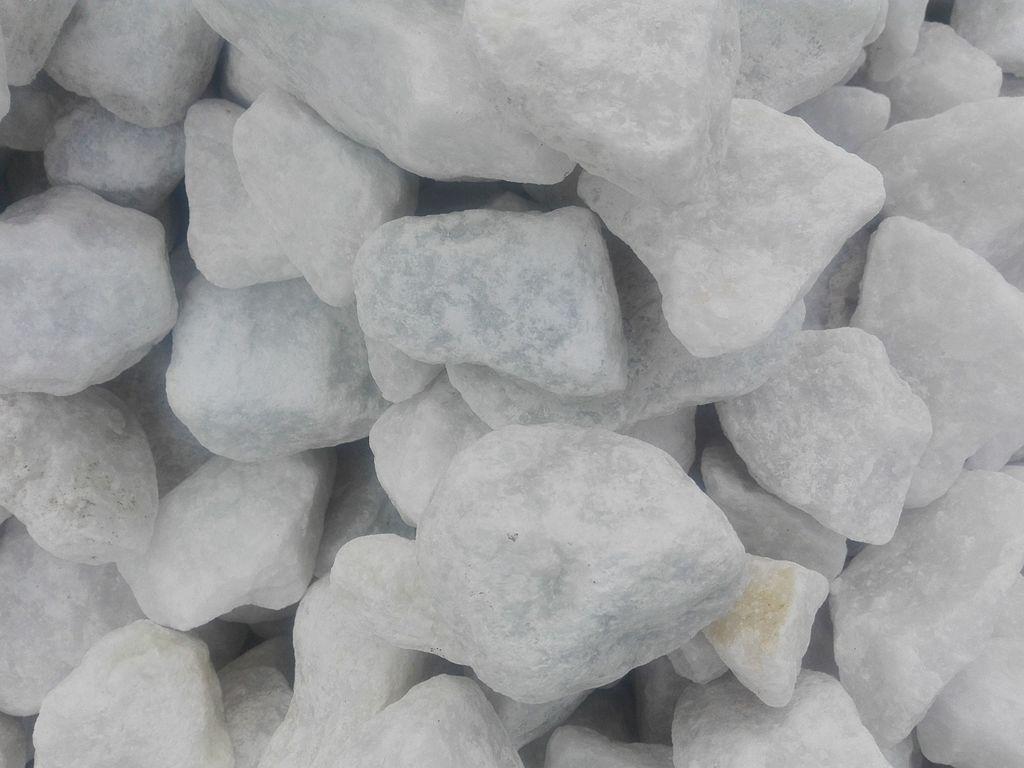
Lime is a soil amendment made from limestone rock containing calcium and magnesium carbonate.
Caring for a lawn can be a tedious and cumbersome task. It involves mowing, watering, and fertilizing your grass. Also, you need to ensure that the soil is in good health, which consists in monitoring nutrients in the ground and ensuring that the soil pH is in line with the needs of your grass.
Using lime is an excellent way to boost the pH of your lawn soil and ensure that it never runs out of essential soil micronutrients, calcium, and magnesium. In addition, lime can also speed up thatch composition in a lawn. However, using too much lime is never a good idea as it can cause significant damage to your grass.
What else do you need to know when liming your lawn? Read on to find out!
What Is Lime & What Does It Do For Lawns?
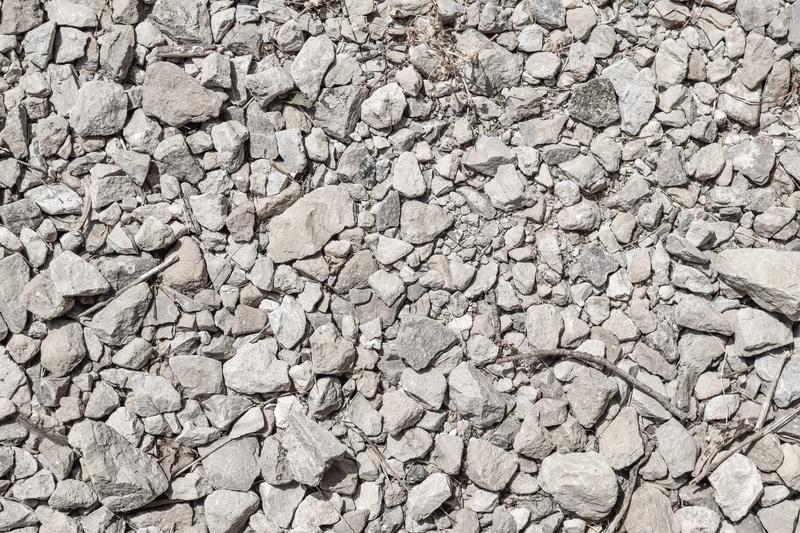
Agricultural lime, sometimes called garden lime, is a soil additive made from pulverized limestone.
Lime used in lawns, gardens, and crops comes from chalk or pulverized limestone. The chalk or limestone is crushed into small pieces or ground into powder for use. Garden lime has a high concentration of calcium carbonate and magnesium carbonate.
Generally, two types of lime are commonly used in gardening: Dolomitic lime and high-calcium lime. They have different concentrations of calcium and magnesium. For example, high-calcium lime is nearly entirely made up of calcium carbonate.
In contrast, Dolomitic lime is about 40 to 45 percent magnesium carbonate and only 50 to 55 percent calcium carbonate.
So, depending on what nutrients your lawn soil lacks, you can use either high-calcium lime or Dolomitic lime to boost its nutrients and pH.
RELATED: What Is The Best Time To Plant St. Augustine Grass? The Ultimate Guide
Why Is Lime Used In Lawns?
Lime is one of many soil amendments widely used in the lawn industry to ensure that the soil stays healthy and has all the nutrients to support healthy grass growth.
Lime treatment is generally known for raising the pH of acidic lawn soils where grass cannot grow. However, it has many other applications. Take, for example,
- Lime adds calcium to the lawn soil. Calcium helps protect grass from pathogens and promotes root development. In addition, it also increases the absorbance of other nutrients from the ground, such as copper, zinc, and phosphorus.
- Lime adds magnesium to the soil. Lawn grass deficient in magnesium turns yellow and starts to droop. Magnesium ensures that grass maintains its green color and increases its tolerance to cold and other environmental stresses.
- Lime also makes the grass more sturdy and drought resistant. The result is that grass becomes much more resistant to foot traffic and water shortages.
- Lime is also beneficial for microorganisms in the soil. Without these microorganisms, dead grass will take too long to decompose, which can cause thatch buildup.
- Lastly, and this you might already know, lime boosts soil pH. This is because it contains carbonates that react with acids & neutralize them when added to the soil.
Best Time To Put Lime On Your Lawn
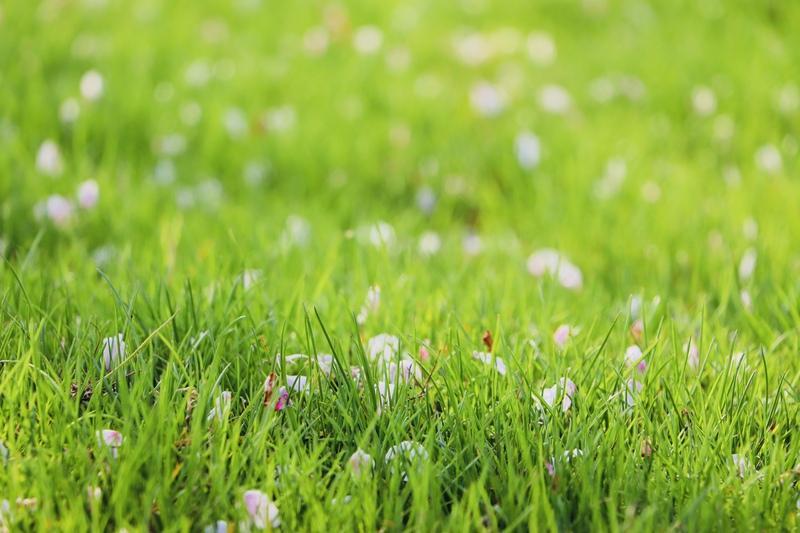
Fall and spring are generally the best times to lime lawns.
Timing is of the essence when you are applying lime to your yard. Lime does not break immediately when added to the soil. It takes some time. The duration will vary depending on the properties of the substrate, the product’s physical form, the soil’s pH, the weather conditions, and most importantly, how well lime is mixed into the ground.
If you are unsure of your soil’s needs and pH and do not know which lime you should use, working with a professional lawn care company can make the process quicker as they understand what lime to use and how to apply it correctly.
Nevertheless, you can apply lime to your lawn at any time of the year.
However, if you time it correctly with the growth cycle of your grass, you will have much better results. Therefore, you should try to apply lime on your lawn in the spring or fall. Some experts even say fall is the best time to apply lime in a yard or lawn.
Using lime in the fall ensures that lime boosts the pH of your soil and adds nutrients to it before the next growing season arrives.
Moreover, if you accidentally overapply lime in your yard, the ground will have enough time to adjust before the growing season.
When Should You Not Use Lime On Your Lawn?
Never use lime on your lawn when the temperatures outside are soaring, for example, in the summer heat. High heat can cause disruptions to the chemical process that causes the pH to change when applying lime. In addition, the negative effect of these chemical reactions can further disrupt the pH of your soil.
Likewise, you should avoid liming your lawn during the winter. Low temperatures slow down chemical reactions, and lime adjusting the soil’s pH is already a slow reaction. Furthermore, the high moisture during winter can also dilute lime and slow its activity further.
Therefore, if you are looking for a quick fix to the soil conditions of your lawn, you may want to get a soil replacement or look for any other quick solution.
How Long Does Lime Take To Work?
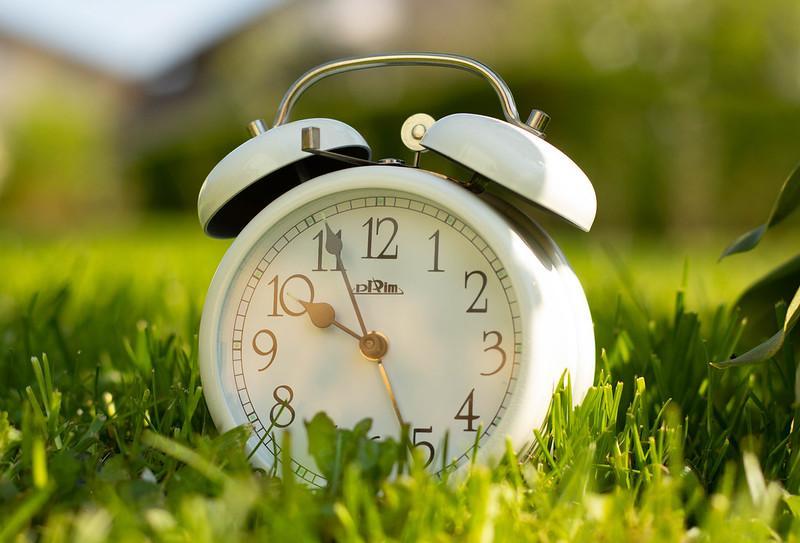
The benefits from the lime application can appear within the first few months after application.
The amount of time lime requires to add nutrients to the soil varies depending on soil pH and composition (loam, sand, and clay).
In addition, the reactivity of lime also depends on the type of lime used for the amendment. For example, fine lime works faster than coarse lime, and high-calcium lime works faster than Dolomitic lime.
Water also determines the reactivity time of lime. That’s because lime needs to dissolve in the soil to work. So, in dry soil, lime might take longer to work. In contrast, frequent irrigation and rain might speed things up and achieve faster results.
Nevertheless, garden lime will start producing results when added to the soil in the first few months. However, it may take garden lime about 2 to 3 years to dissolve fully.
How Does A Lime Treatment Work?
Before we discuss the different aspects of liming a lawn, let’s quickly go over how lime boosts soil nutrients and pH.
Soil contains many macro and micro-nutrients that your plants need to survive. However, the availability of these nutrients depends on a balanced soil pH. If the pH becomes too acidic, these nutrients become unavailable to plants.
Lime corrects this imbalance in soil pH by neutralizing soil acids.
Thus, the nutrients again become available to the grass, which flourishes.
There are some plants, though, that prefer acidic soil. Common examples include azaleas, rhododendrons, blueberries, and tomatoes. They do best when soil pH is between 4 and 5. So, applying lime to them can have detrimental effects.
Make sure you research your plants before applying lime to your garden or oil.
Also, you should get a soil test and then adjust the pH of your soil.
Signs That Your Lawn Needs Lime
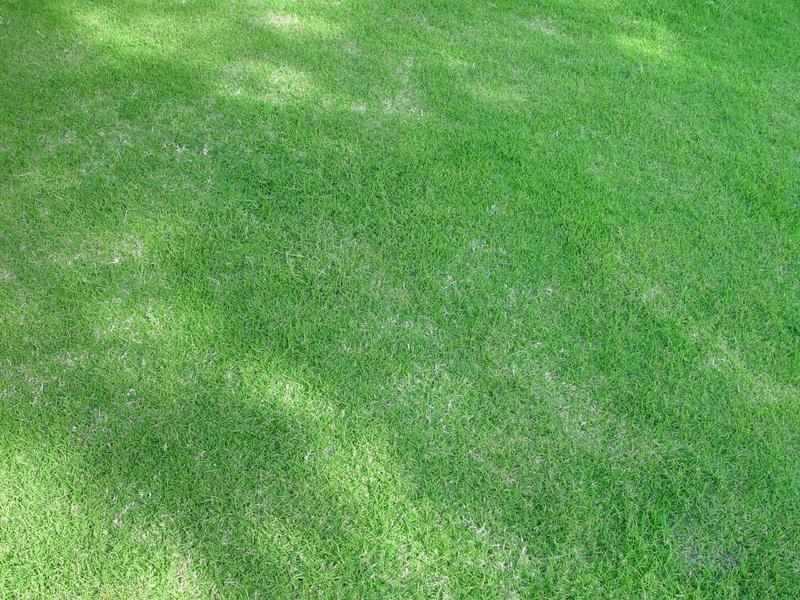
If your lawn grass is yellow in some places rather than green, it might need a lime treatment.
If your lawn is not as healthy as it once was, it might lack essential nutrients such as calcium and magnesium, or its soil might be too acidic. Both these issues can be fixed easily by applying lime. However, how do you tell if your lawn or garden soil needs lime?
There are some telltale signs which you can use to tell if your lawn or garden soil needs a lime treatment. However, it is always best to perform a soil test to determine the exact pH. Nonetheless, here is what to look for if you want to apply lime to your yard:
- You see moss growing on your lawn. It is because moss invades yards with acidic soils and grows and spreads quickly in such conditions.
- There are too many weeds on your lawn, especially dandelions and clover. Once again, this is because these weeds thrive in acidic soils.
- If your fertilizer is not working, your lawn might need a lime treatment. Nutrients become unavailable in acidic soils, rendering fertilizers useless.
- Drought stress, pests, and lawn diseases indicate that your lawn is missing something. This, in some cases, could be fixed by lime.
- Lastly, if you live in an area that receives too much rain, the water could result in the runoff of alkaline elements in the soil, necessitating lime treatment.
However, even if all of these issues are present in your lawn, it does not mean the lack of lime is the root cause. The problem could be something entirely else. Therefore, I highly recommend getting a soil test before applying lime to your lawn.
RELATED: Buffalo Grass 101: Is It Any Good & How Can You Grow It In Your Yard?
How Much Lime Should You Use In Your Lawn?

Before adding lime, you need to determine your yard’s size, pH, and soil type.
You cannot just add lime to your lawn for the sake of it or throw whatever amount you want on your yard and expect to see any improvement. Adding lime too quickly or too much of it can do more harm than good, and you might even end up killing your grass.
It would help if you calculated exactly how much lime you need to apply to get the pH to the desired level. For this purpose, you will first need to know three things.
- First, determine what kind of soil you have in your lawn. You can do it in two ways: Pick the dirt in your hand and feel its texture. If it feels smooth with small particles, it is clay. However, if it feels gritty with large particles, it is sandy.
- Otherwise, mix the dirt from your lawn with water in a jar and shake it. Then, let it stand for a bit. If it settles quickly, it is sandy; if it does not, it is clay.
- Secondly, determine the ideal pH for the plants or grass you grow. For example, most grass species need a pH of around 6 or 7. However, some species prefer slightly alkaline soil pH. So, you will need to adjust the pH accordingly.
- Thirdly and lastly, you need to determine the current soil pH. For this purpose, you can perform a soil pH test. Many commercial soil pH testing kits are available on the market, but you can also get a soil test from your local extension.
Once you have determined these things, you can use the below-given table to adjust the pH of your garden or yard soil by adding the appropriate amount of lime.
| Texture | Pounds of lime needed to raise the pH from 4.5 to 5.5 for an area of 100 square feet | Pounds of lime needed to raise the pH from 5.5 to 6.5 for an area of 100 square feet |
| SiltLoam | 6.70 | 9.20 |
| SandyLoam | 3.70 | 6.0 |
| Sand orLoamySand | 2.30 | 2.75 |
| Muck | 17.40 | 19.80 |
| Loam | 5.50 | 7.80 |
| ClayLoam | 8.70 | 10.50 |
However, please remember that this table does not include all the starting and desired pH levels. So, you will need to adjust the values for your specific needs.
Example: How Much Lime You Need For A Lawn?
Here is an example to make things further easy for you.
Let’s say that you want to adjust the pH of your lawn from 5.5 to 6.5. It means that we will need to use the column on the far right side of the table given above.
Next, you will want to determine the soil type in your yard. Let’s assume that it is sandy. Looking at the table above again, you will have to add about 2.75 pounds of lime to your lawn to raise its pH from 5.5 to 6 for an area of 100 square feet.
However, there is a problem! You do not know how many square feet your lawn is.
Well, do not worry. It is pretty easy to calculate. Just multiply its length by foot with its width.
So, let’s say your lawn is 30 feet long and 30 feet wide. 30 feet x 30 feet = 900 square feet. It means there are nine areas of 100 square feet in your yard. Therefore, we need to use 9 x 2.75 = 24.75 pounds of lime to raise the pH of our lawn from 5.5 to 6.5.
How To Correctly Apply Lime To The Soil?
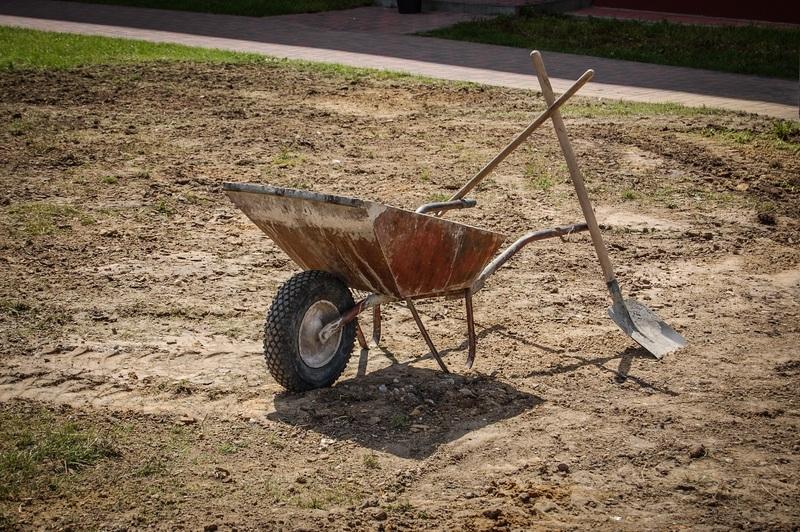
If unsure, hire professionals to get the job done.
Now that you know how much lime you need to fix or raise your lawn’s pH, let’s see how to apply it correctly to get the most out of your effort.
I highly recommend hiring a professional lawn care service to apply lime to the soil if you do not have the proper knowledge and tools to do it yourself. Doing this will be expensive, but it can save you time and the potential risk of harming yourself and your lawn.
Nevertheless, if you still want to do it yourself, please keep these things in mind.
Ensure you have safety gloves and a mask, as lime can irritate if inhaled. Also, ensure you clean the surrounding of your lawn once you are done, as residual lime can corrode plastics and stick to hard concrete surfaces such as patios.
Lastly, depending on the type of lime you use, the application method will be changed.
This is described further in the paragraphs below. You must ensure you evenly spread the lime, as throwing too much in one place can kill the grass.
Liquid Lime
Liquid lime is probably the easiest way to ensure even coverage across your lawn. All you have to do is use a sprayer and then walk around your yard. However, there is one issue.
You could quickly go overboard and overapply lime to your yard when using it as a spray. Therefore, you will need to be extra careful and ensure not to make any mistakes.
Granular Lime
Granular lime is probably the easiest way to amend lawn soil for most lawn owners. However, you will have a hard time creating even coverage compared to liquid.
But on the plus side, you do not have to worry about overapplying it as much. Instead, open a bag, put granules in the spreader, and apply as per the manufacturer’s directions.
Powdered Lime
Last comes the powdered lime. Powdered lime is probably the hardest to spread evenly on a lawn. However, it is still a product that many people choose.
That is because you can spread powdered lime simply using your hands.
Water The Lawn After Applying Lime
Once you have applied lime to the lawn, you will need to water it. However, please ensure that you do not overwater your lawn. Overwatering might cause the lime to wash off the lawn’s surface, and all your hard work will be for nothing.
Just water the lawn lightly with sprinklers or a hose. It will ensure that lime gets dissolved and works quickly into the ground, boosting the soil’s pH.
RELATED: How To Fix A Patchy Lawn? Steps, Tips & Tools Needed | A Comprehensive Guide
Can You Put Too Much Lime On Your Lawn?

Too much lime changes the soil pH and pushes it where the grass will not thrive.
Liming is an excellent way to amend your lawn soil. However, sometimes you might add too much lime to your lawn when trying to boost its pH, calcium, and magnesium concentration.
This can wreak havoc on your lawn. Too much lime will remove all the acidic elements from your yard, some of which grass needs. Moreover, it will make the grass too alkaline for the grass or any other plants you want to plant to thrive and lock the nutrients in the soil.
For example, applying excess lime to the lawn increases calcium concentration in the soil a little too much. And too much calcium in the earth blocks the absorption of magnesium into the grassroots. Similarly, too much lime in the soil can also prevent grass from taking in iron from the ground, which causes the grass to turn yellow and pale.
There is another thing! Even if you calculate correctly and apply the right amount of lime to your lawn, you could run into issues if you add it too quickly. Too much lime at once can cause a sudden rise in soil pH, killing the grass.
Too much lime in the soil can also make things harder for the soil microorganisms, which are essential for the health of good lawn soil. It is because most of these organisms survive in a pH of 6 to 7, and a highly alkaline soil will lead to their death.
Lastly, there is the issue of soil compaction. If you add too much lime to your lawn soil, it will become overly compact, which will cause drainage and aeration issues in the yard. And, if you are a gardener, you must know grass cannot thrive in these conditions.
Signs That You Have Overapplied Lime
Here are a few telltale signs that you can use to determine if you have overapplied lime:
- Grass in the lawn starts turning yellow due to nutrient deficiencies.
- No amount of fertilization seems to fix the nutrient deficiency problem.
- After liming, your yard becomes more prone to diseases and pests.
- There are bleach spots present on the leaf blades of your grass.
How To Fix Too Much Lime In The Soil?
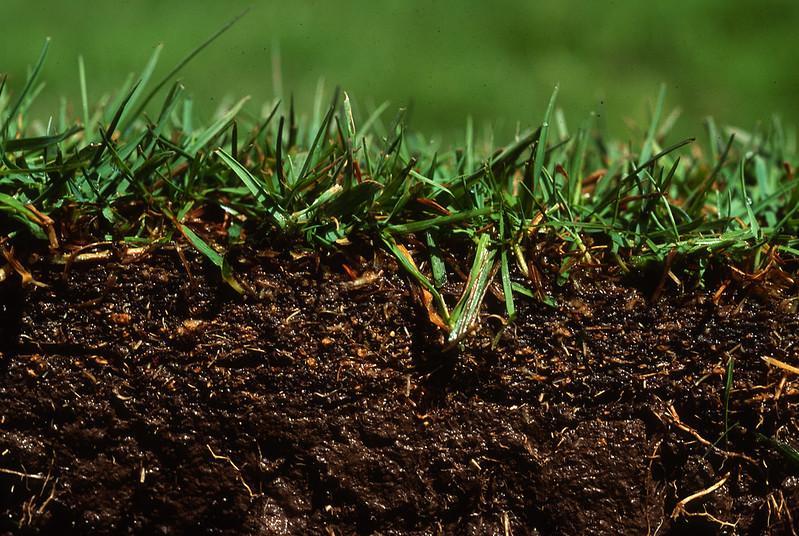
Treating a high pH caused by liming with sulfur can lower the soil pH.
Once you have determined that you have added too much lime to your lawn or garden soil, you will need to fix it. Otherwise, everything in the yard might die.
There are several approaches to counter the effects of too much lime in the ground. These methods are described in detail in the paragraphs given below. Depending on how to approach things, some of these methods will be more appealing to you.
Topdress The Lawn With Compost
If you have accidentally put too much lime in your lawn’s soil, topdressing it with compost is an easy and quick solution to the problem that will get you good results.
So, find some good quality compost or if you make your compost, use that. However, chances are that you won’t have much compost at your home to cover the entire lawn. Nevertheless, once you have the compost, spread it over the yard.
However, ensure that the layer of compost over the grass is not too thick. About one-fourth of an inch thick layer of compost will do the job just fine.
The only problem with this solution is that it will not work if you have thrown the pH of your lawn way off the neutral point of 7 by using too much lime. So, once again, I recommend getting a soil test before treating your lawn for lime overuse.
If the pH of the soil is just a little bit higher than desired, go with composting, as it will also feed your lawn. However, if it is way off, use the methods below.
Use Elemental Sulfur To Lower The pH.
Using elemental sulfur is an excellent method to lower the pH of the soil without getting your hands and clothes dirty with the messy compost. Also, as stated above, it can even fix higher pH changes in the ground compared to compost. Elemental or horticultural sulfur is also quick and can bring the pH down quite rapidly compared to compost.
However, using sulfur to lower the pH of the soil is not entirely safe. The problem is it is very potent, and just like lime, if you use too much, it can make the pH of the soil too low. And, as you might already know, acid is not suitable for grass.
Therefore, you need to be careful when using sulfur to fix the pH in a yard.
Also, please remember that although it works quicker than compost, it will still not produce instant results. So, once you add sulfur to the soil, wait and relax for a bit.
You could easily add too much sulfur to your lawn in the hope of quick results, and it will give you nothing but despair and a dead, lifeless yard in the end.
Apply Organic Mulch To The Lawn
Lastly, you can try adding mulch to your lawn to remedy the effects of lime overuse.
Mulch, like compost, is organic and acidic. So, applying a thin layer over your lawn will, over time, lower the pH of the soil. However, you will have to be patient.
Do not hurry, or you might make the problems even worse.
Final Thoughts
Lime treatments are an excellent way to boost your lawn soil’s pH and nutrient (calcium & magnesium) content.
And while you can apply lime at any time of the year, for best results, you must time it with the active growing season of your grass.
Also, you do not want to overuse lime in your yard. It can do more harm than good. However, when you know what you are doing, it becomes effortless to get good results.
Frequently Asked Questions (FAQs)
Is Lime Harmful For Pets or People?
Lime is not toxic or harmful to people and pets. However, it does not mean you should be careless when using it. Always wear gloves and a mask when handling lime. If inhaled, lime can irritate the air passageways. Also, ensure that kids and pets stay away.
Can You Apply Lime And Fertilizer At The Same Time?
Although you can fertilize and lime your lawn simultaneously, experts recommend that you should not do that. It makes lawn care tasks more complicated and comes with many risks. For example, you could accidentally overfeed your lawn with calcium.
What type of lime is best for yards?
Although there is debate, calcitic lime is generally considered the best for lawns. It is high and calcium and works rapidly to raise the pH of the soil to desired levels.
Should you put lime on your grass every year?
You should not apply lime to your lawn yearly as you could easily overuse it. When added to soil, lime starts producing results in a few months. However, it will not completely dissolve into the ground until two to three years later.
Does lime make the grass greener?
Your grass will be in better health, appear more green, and grow much faster if you use lime to neutralize the acid in the soil. However, do not overuse it. Lime could kill grass if used too much or too quickly in a lawn setting.
Sources for Further Reading
Is lime safe to use on your lawn? – Cooperative Extension: Garden & Yard – University of Maine Cooperative Extension. (2022). Retrieved 28 December 2022, from https://extension.umaine.edu/gardening/2022/03/23/is-lime-safe-on-lawns/
Lime and Lawns | University of Maryland Extension. (2022). Retrieved 28 December 2022, from https://extension.umd.edu/resource/lime-and-lawns
The Use of Gypsum and Lime on Lawns and Gardens. ISU Extension and Outreach. (2022). Retrieved 28 December 2022, from https://hortnews.extension.iastate.edu/2000/7-21-2000/limelawn.html
Editor’s Recommendations
How To Make Your Zoysia Grass Spread Faster? A Comprehensive Guide
Moss In Lawn? Is It Harmful, And How To Get Rid Of It For Good?
Gypsum For Lawns: Is It Any Good And How To Use It Correctly?







